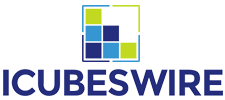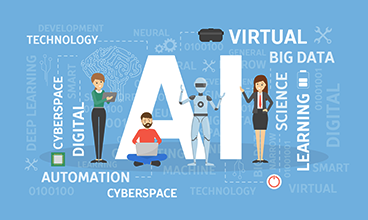Making chatbots your mouthpiece
Published By:
Brands are using chatbots not only for better customer engagement but also to automate marketing and save time and money
Current trends show corporates have an increasing interest in chatbots, says Sahil Chopra, CEO and Founder, iCubesWire, a digital marketing company. As brands seek to increase customer engagement and retention they can achieve this by commissioning a chatbot, he says. Research firm Markets and Markets says the market for chatbots worldwide is expected to grow from $703.3 million in 2016 to $3,172 million by 2021, at a CAGR of 35.2 per cent.
What more they can do
Marketers are also investigating chatbots’ use in improving advertising performance, organic reach and automating marketing. To that end, iCubesWire recently conducted a survey on ‘Efficacy of Artificial Intelligence’.
“The survey indicates that marketers need to explore AI a lot more, even as they assure customers of data security. Brands should consider the statistics as an opportunity to enhance their chatbot reach. While the rate of integration is enormous, a wider scope is around the corner.” said Chopra.
Though Siri, Alexa, and Google Allo have been making their presence felt in most homes across the country, for marketers and brands a key impediment is interacting accurately with consumers and measuring the volume of customer engagement.
Digital marketers are now using chatbots as the newest tool to reach and maintain their target audience. For instance, the Starbucks Barista bot for Facebook Messenger has got it covered. It serves a very specific, very important purpose: it orders coffee. Especially when one desperately needs a cappucino fix, with minimal human interaction and effort, the bot gets down to work.
Chopra points out that as chatbots become more sophisticated, brands are relying on them a lot more.
Recently, Haptik, an artificial intelligence (AI)-based chatbot platform, teamed up with Amazon Web Services (AWS), a major cloud provider, to offer solutions that allow companies to use conversational bots to automate some of their most critical processes.
Haptik’s ad tech platform enables advertisers to engage users on its publisher network through chatbots. The company reaches 3 crore users through the publisher network. Some 90 per cent of the audience is based in metro cities, and most consumers are around 25 years old.
Aakrit Vaish, Founder and CEO, Haptik notes that the company’s tech infrastructure employs a blend of AI, natural language processing (NLP) and machine learning. Incidentally, the company’s bots learnt Hindi on their own, revealing the true meaning of machine learning where a machine can learn independently without any manual help.
Though Haptik focuses on building English-speaking chatbots,the bots can converse with users in basic Hindi. Vaish points out that bots tend to help enterprises reduce customer support cost, generate better quality leads and drive sales.
With the advent of deep learning technologies such as text-to-speech, automatic speech recognition, and NLP, chatbots that simulate human conversation and dialogue can now be found in call centres and customer service workflows, and even as personal assistants, says Vaish.
Haptik is now set to create these solutions on the AWS AI infrastructure. Navdeep Manaktala, Head of Business Development -India, Amazon Internet Services said Haptik’s chatbot platform would be built entirely on AWS. “The rich functionality within the platform leverages Amazon Polly, a text-to-speech service that uses advanced deep learning technologies to synthesise speech that sounds like a human voice,” he said.
The officials added that chatbots allow for highly engaging, conversational experiences, through voice and text that can be customised and used on mobile devices, web browsers and popular chat platforms.
The phone tops, still
The iCubesWire survey underscored that since the phone is still a favourite among consumers, AI-based solutions can bank on this opportunity.
“Though 90 per cent of consumers who have interacted with a bot tend to find it useful, in our survey, an audience of 59 per cent still prefer a phone as a medium to reach out for help,” said Chopra.
Stating that the data “would surely reverse with time and we can expect to see a lot more people preferring bots,” Chopra said, “This also indicates that marketers need to do a lot more work with AI.”
The rate of accuracy and instant solution imparted by chatbots is exemplary. Stating that the statistics are very encouraging and clearly shows people’s preferences, Chopra maintains consumers are perennially short of time, and want accurate solutions instantly. “With bots, the data and information provided is 100 per cent accurate and instant and there is no need for the users to be puton hold,” he said.
Interestingly, the survey showed that some consumers can’t differentiate between a chatbot and a human, which Chopra noted is a major thumbs up for brands which employ bots. “This is an eye-opener for marketers. Almost half of the audience that we surveyed said they cannot differentiate whether they have interacted with a bot or a human. This evidently points to the fact that the level of service and accuracy is far more important than who the consumers speaks with,” Chopra adds.



